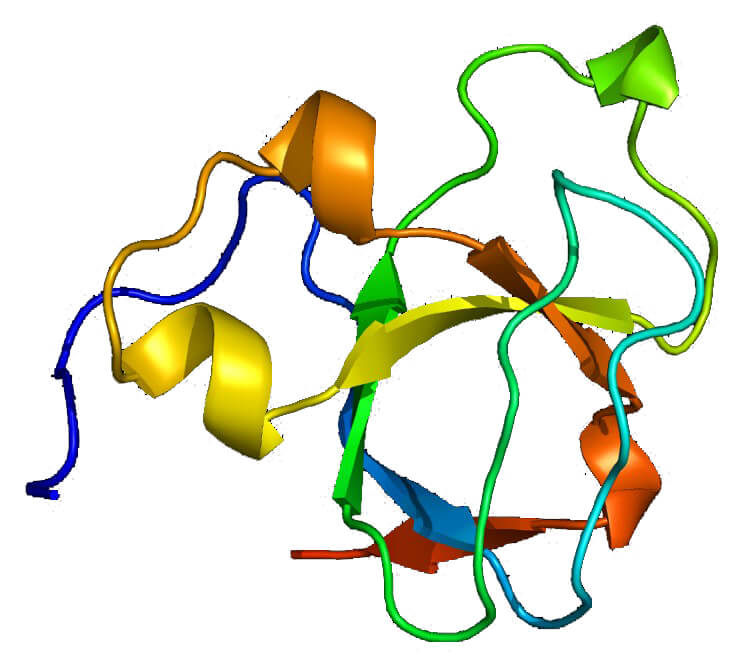With ample experience in membrane protein production, scientists from Creative Biostructure can provide tailored Mempro™ Membrane anchor helices of peripheral proteins production services using detergent-free expression system.
Membrane anchor helices of peripheral proteins is a superfamily which consists of 10 families: Membrane anchor helix of BAR domain, FATC domain, Membrane-binding domain of phosphotransferase IIA component, Anchor helix of protein yopD, Anchor helix of glycosyl transferases group 1, Heat shock protein 9/12, N-terminal helix of Disabled-2, Lipid interacting helix of digalactosyldiacylglycerol synthase, N-terminal helix of Arf proteins and Lipid droplet anchoring peptide. Myc box-dependent-interacting protein 1 is one of the members of Membrane anchor helices of peripheral proteins superfamily, which is encoded by BIN1 gene in humans. The BIN1 gene is related to a few isoforms of a nucleocytoplasmic adaptor protein, and the MYC-interacting protein which is characterized in the isoforms has features of a tumor suppressor.

Figure 1. Crystal structure of BIN1 protein. (Genomics 1997)
Creative Biostructure has ample professional experience in high quality Membrane anchor helices of peripheral proteins production using detergent-free membrane protein expression system, we can perform various strategies for Mempro™ detergent-free protein production, including:
- Mempro™ Membrane Anchor Helices of Peripheral Proteins Production Using Nanodiscs
Nanodiscs provide an inartificial phospholipid bilayer environment for target membrane proteins in the solubilized state. Besides, the structure of nanodiscs is extremely similar to high-density lipoproteins (HDL) and Nanodiscs are generally used for structural, enzymatic and biophysical researches.
- Mempro™ Membrane Anchor Helices of Peripheral Proteins Production Using Amphipols
Amphipols is a highly practicable tool for handling membrane proteins in detergent-free water solutions and generally used for biophysical researches. The wide resources of polymer chemistry can make it possible to tailor the physicochemical properties of amphipols toward peculiar uses in biophysics and biochemistry.
- Mempro™ Membrane Anchor Helices of Peripheral Proteins Production Using Poly (styrene-co-maleic acid) Lipid Particles (SMALPs)
SMALPs are disc like structures including a protein in a lipid bilayer, parceled by the amphipathic styrene maleic acid polymer (SMA). It is indicated that SMALP formation kinetics is greatly affected by the lipid packing of the bilayer and SMALPs can make researchers study membrane proteins in the natural lipid environment.
Our experienced scientists are confident in Membrane anchor helices of peripheral proteins production by using these novel detergent-free approaches. Creative Biostructure can offer the best service to the customers around the world.
Creative Biostructure provides other various Mempro™ membrane protein production services. Please feel free to contact us for a detailed quote.
References:
Negorev, D., Riethman, H., Wechsler-Reya, R., Sakamuro, D., Prendergast, G. C., & Simon, D. (1996). The Bin1 Gene Localizes to Human Chromosome 2q14 by PCR Analysis of Somatic Cell Hybrids and Fluorescencein SituHybridization. Genomics, 33(2), 329-331.
Sakamuro, D., Elliott, K. J., Wechsler-Reya, R., & Prendergast, G. C. (1996). BIN1 is a novel MYC–interacting protein with features of a tumour suppressor. Nature genetics, 14(1), 69-77.
Rossmann, M., Schultz-Heienbrok, R., Behlke, J., Remmel, N., Alings, C., Sandhoff, K., . . . Maier, T. (2008). Crystal structures of human saposins C and D: implications for lipid recognition and membrane interactions. Structure, 16(5), 809-817.
Yan, N. (2015). Structural biology of the major facilitator superfamily transporters. Annual review of biophysics, 44, 257-283.
